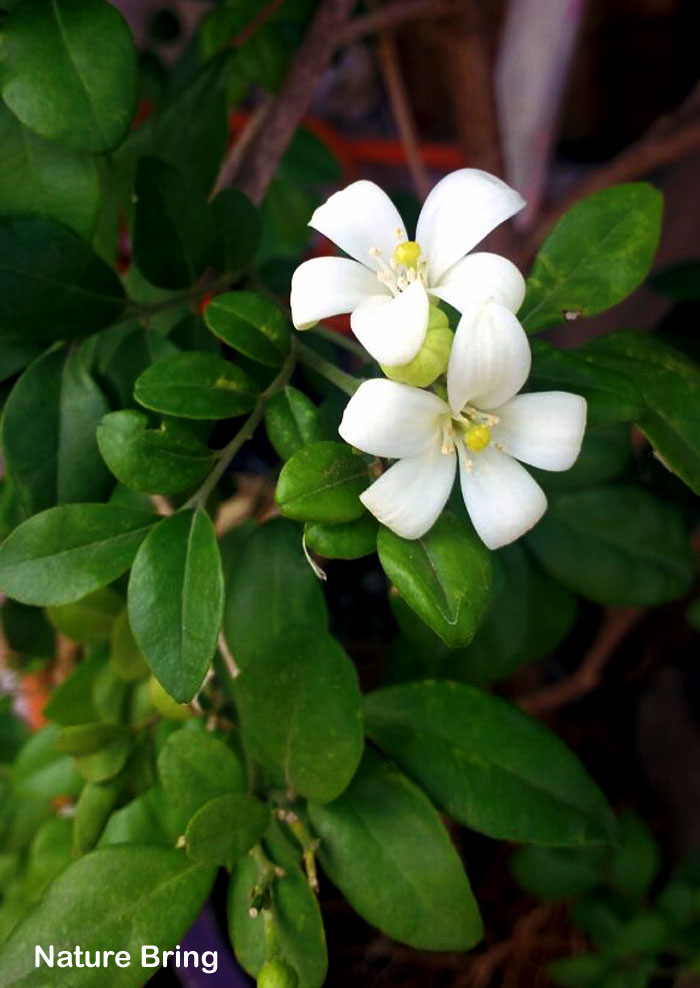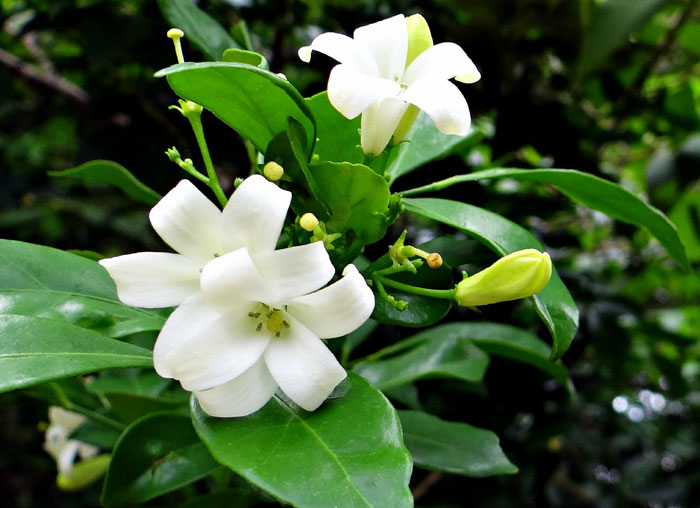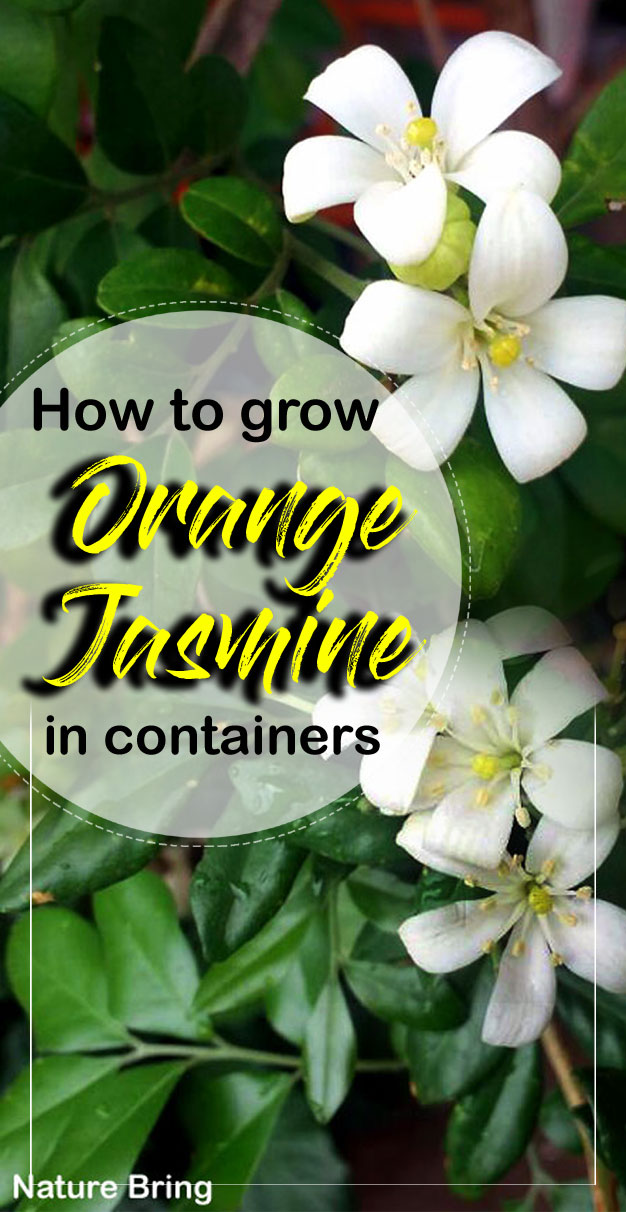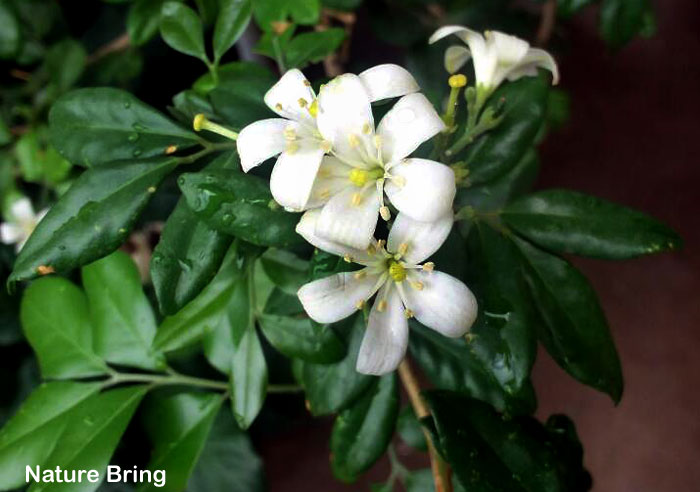Kamini (Murraya paniculata)
Learn How to grow Kamini, Orange Jasmine, Growing Murraya paniculata, Popular names kamini plants, Murraya paniculata varieties and more about chinese box plants. Kamini (Murraya paniculata) or orange Jasmine is a very beautiful tropical flower plant. Its flowers are sweet and sour aromatic, small in size, and blooming throughout the year. People have planted it as a hedge or ornamental plant, with good care, you can plant it in containers too. Chinese box (Kamini ) is native to India.
Its flowers are extremely delicate, and when trying to touch, its petals fall immediately. Orange Jasmine leaves are dense, beautiful and dark green and shiny, and it needs sunlight. Its small, aromatic flowers come in flakes that attract bees, its fruits attract small birds. Kamini is planted near Honey Bee Farms. It not only provides food for bees but also provides protection from harsh winds. Sweet honey is tender when honey is collected because Honey B collects pollen from orange jasmines.

Orange Jasmine overview
Scientific Name Murraya paniculata
Common Name Kamini, orange jessamine, Chinese box
Plant Type Flowering plant
Sun Full Sun
Flower color White
Soil Sandy, acidic and humid soil
Soil pH Acidic natural
Zone 9-11
Popular Names in India
Orange Jasmine, Chinese box, Mock orange, Honeybush, Kamini in Hindi, Kunti in Marathi, Kamini Phool in Nepali, Nagagolungu in Telugu and Maramulla in Malayalam are also known by many other names in India.

Growing Conditions of Kamini
Soil and Location
It grows very well in alkaline, clay, sandy, acidic, and humid soil. For this, moisture soil should be good but should not be damp or soggy. The well-drained soil will give you the best results. It is a tropical plant, so loves the sun full, although it can bear some shadow. This is perfect for a sunny window.
Propagation
Murraya paniculata can propagate by cuttings or seeds, but it can be easily developed by stem-tip cutting. For this, you should take a healthy cutting, ideally except some leaves, and remove it all. Place it in a container with a medium like sterile, well-drain peat or sand and keep it in hot spots. If you use a rooting hormone to propagation the chances of success increase. Read more.
Watering
Kamini plants like moisture, so these plants require regular water. It should not be water logging in its soil, it can cause damage to the plant.
Fertilizing
During the growing season, feed your farming plant balanced fertilizer (5-10-5 or 5-10-10). Allow approx 1 cup for each bush, sprinkle it around the drip line.
Usage
Traditionally, Kamini is used to kill traditional medical analgesic, and its wood is used for tool handles. In the western part, it is used as a decorative tree or hedge.
How to grow Kamini from seeds
- The seed propagation of kamini plants is the most reliable because it does not respond well to the asexual promotional method like cutting. Follow the following method to grow by seed.
- Orange jasmine waits for the fruit to be ripened, when the fruit becomes bright red, peel the outer coat with the help of a sharp knife, and get the yellow-white seed out.
- Wash Chinese box seeds properly in cold, clean water so that the sticking flesh is completely removed. Dry the seeds for 15 to 20 minutes before sowing in the container. Now prepare containers, check drainage hole.
- Fill in the 3-inch starter pots with a potting mix and a part perlite mixture. Press the mixture so that there are no air pockets in the bottom of the vessel.
- Sow one orange jasmine seeds in Starter Potts, and cover the seeds with loose soil and gently pat.
- You set your pot on the germination mat, near the source of very bright, indirect light. Place the temperature between 75 – 80 degrees F on the germination mat. Cover your pots with plastic sheets so that you can keep enough moisture.
- Regularly check the moisture level in the potting mix, as it dries fast. Whenever the dries more than 1/2 inch, then add water. For water, you use a spray bottle.
- Germination takes about 1 month, sometimes orange jasmine seeds take up to two months for germination. After the germination removes the plastic sheet and closes the germination mat.
- Now place your pots in the Outdoor Area, where they get bright, indirect light.
- Fill 8-inch containers with sterile potting mix and Plant orange jasmine, Acclimate to face direct sun after a week’s. Read more.
How to care orange jasmine
- The orange jasmine plant grows in warm climates, but plants engaged in a container require regular water. Never allow your plant to stand in a muddy soil or water.
- During the growing season, every three to four weeks, feed your orange jasmine evergreen plant fertilizers or use plant balanced fertilizer (5-10-5 or 5-10-10).
- Keep trimming the plant to maintain the desired shape. Remove dead or damaged development, but avoid rigid sorting. Read more.
- Keep an inch of space between the base of tree and mulch. Before and after the blossoming of Kamini, focus on plants regularly and during
Pests and Diseases
Although chinese box is not the problem of diseases usually, but some insects are attracted to it. Soil nematodes, scales, whiteflies, and suti molds can appear in the soil around the plant. Nematodes can be beneficial or harmful for the garden, but later attack the other plants and spreads the virus. Scales worms suck the plants and the plant lacks necessary nutrients and can lead to the white pandemic plant. Sometimes a black fungus appears on the leaves, which blocks the light of the sun on the leaves.
Murraya paniculata varieties
There are many varieties of kamini plants, which can be a luxurious houseplant. Its most popular species, which is polyethylum, is fragrant and pink flowers grow in it. Apart from this, there are many other varieties of jasmine, which include primrose jasmine and common jasmine.
Read also:
How to grow Orange in containers. Growing Jasmineplants indoor. How to grow Peppercorns plant. Growing Microgreens at home. How to propagate your pants from cutting. Allamanda cathartica growing and caring. Custard Apple growing and caring. Pumpkin growing and caring tips. Cantaloupe growing and caring tips. Beetroots in containers. Lavender growing and caring tips. Colorful Vegetable growing in your garden.
Happy Gardening
For Pin





